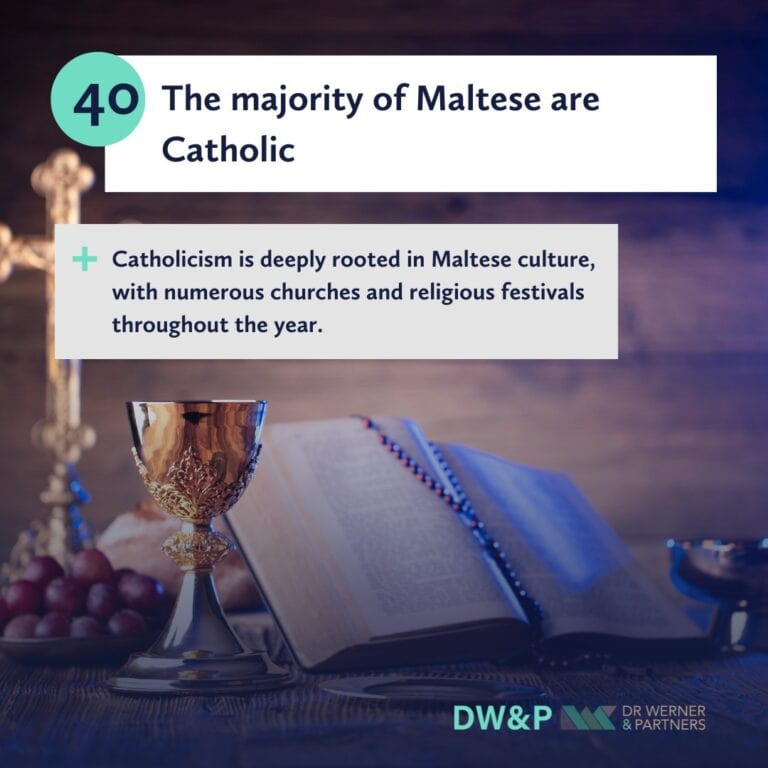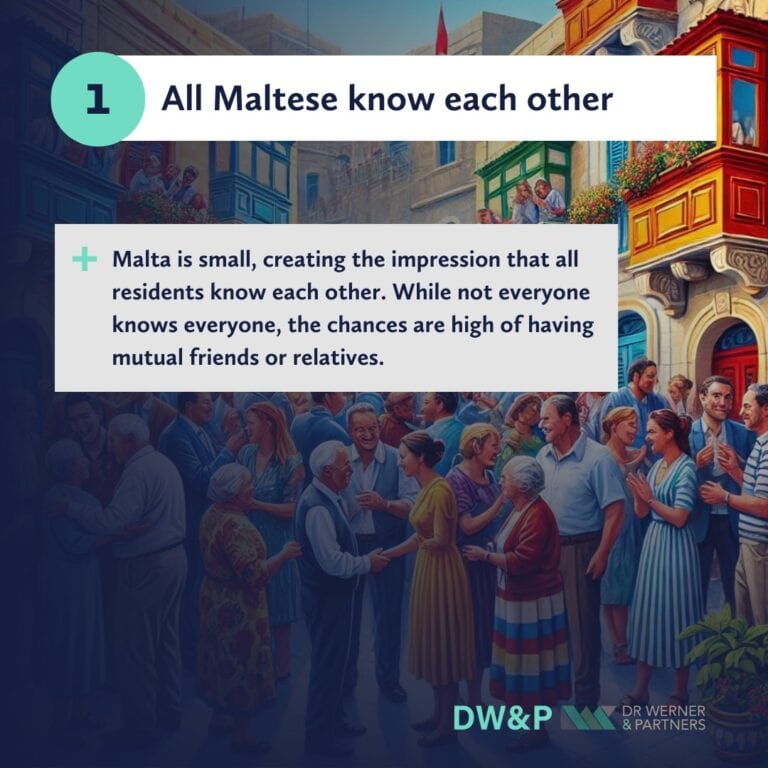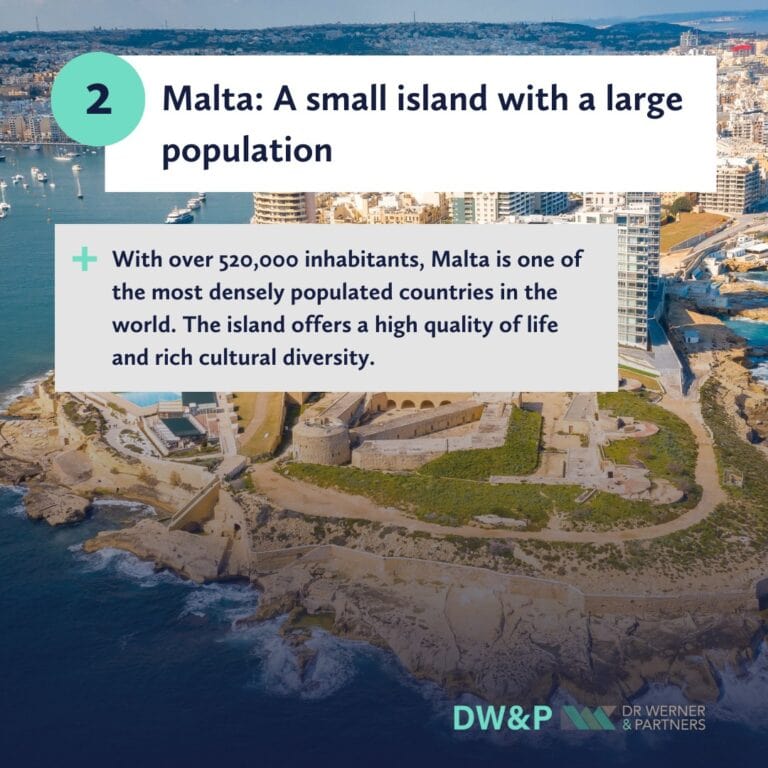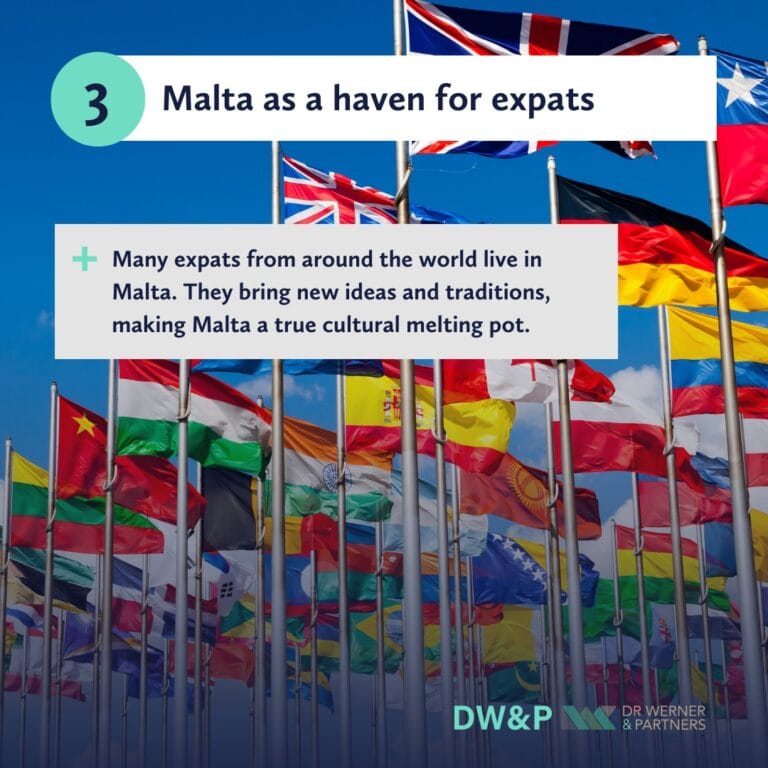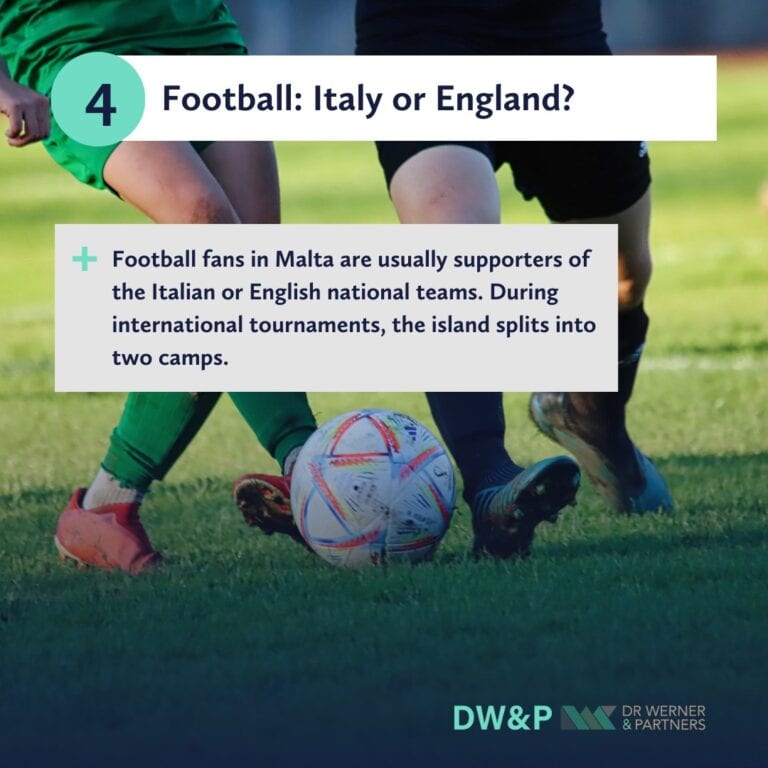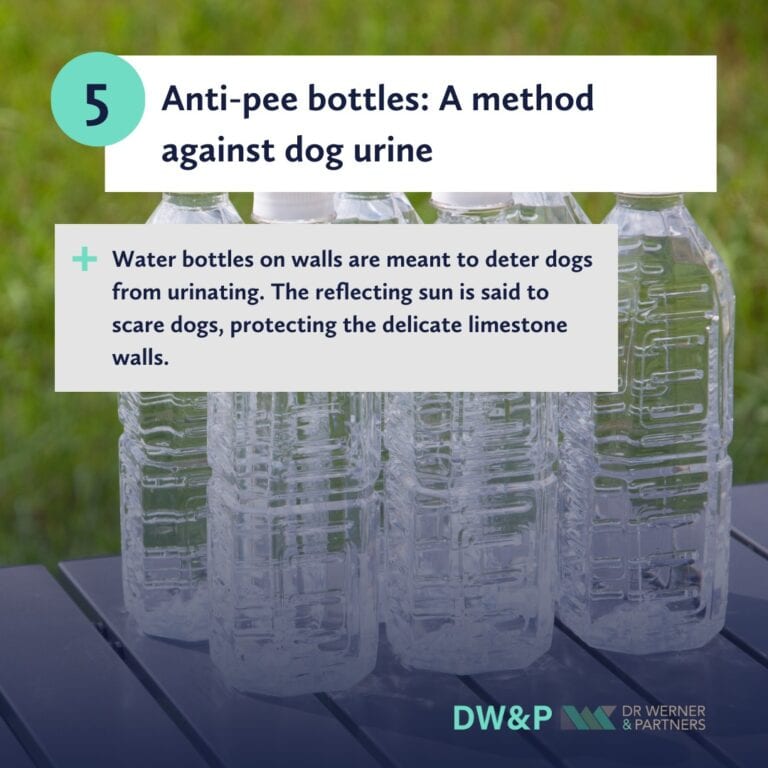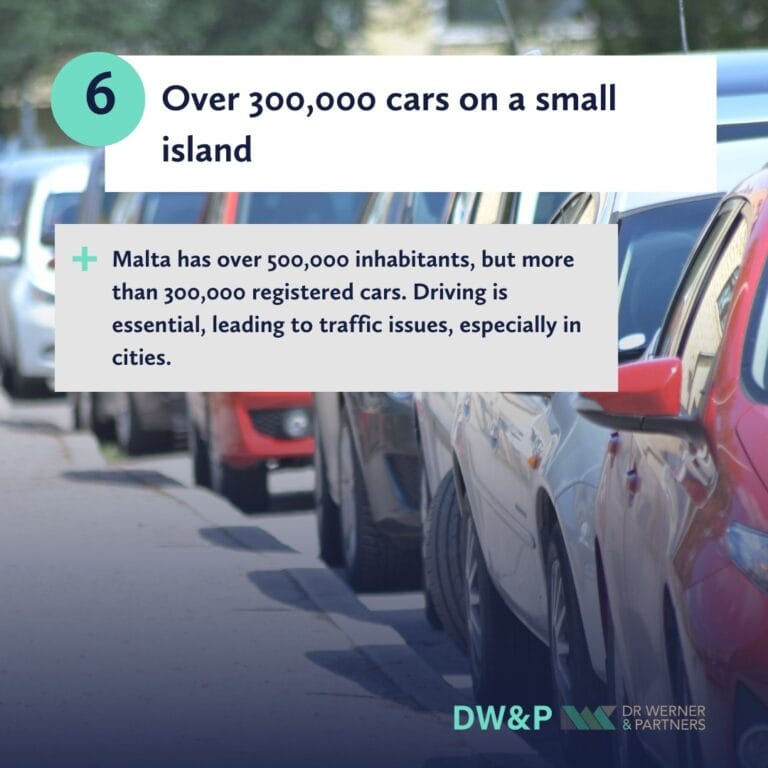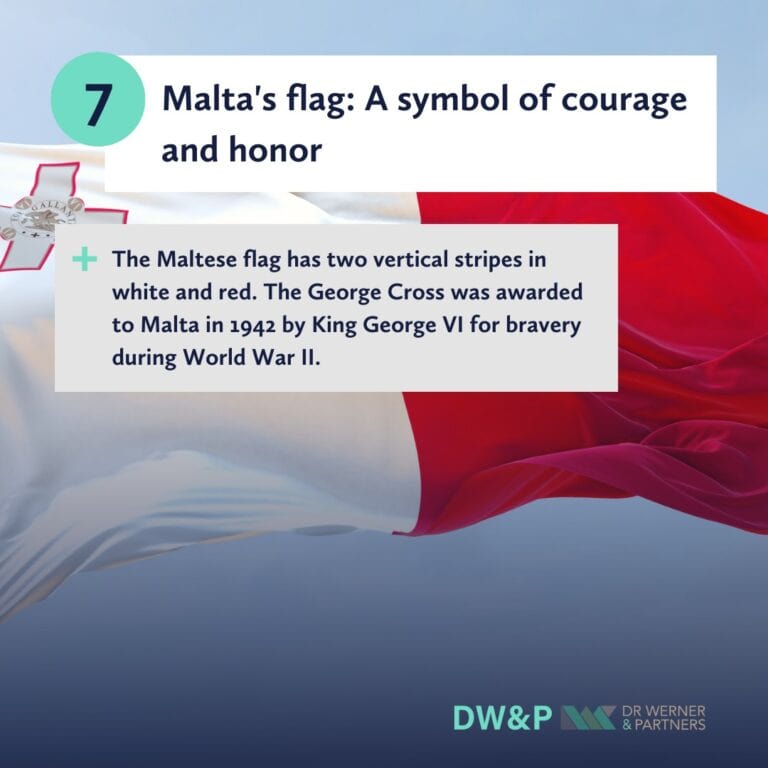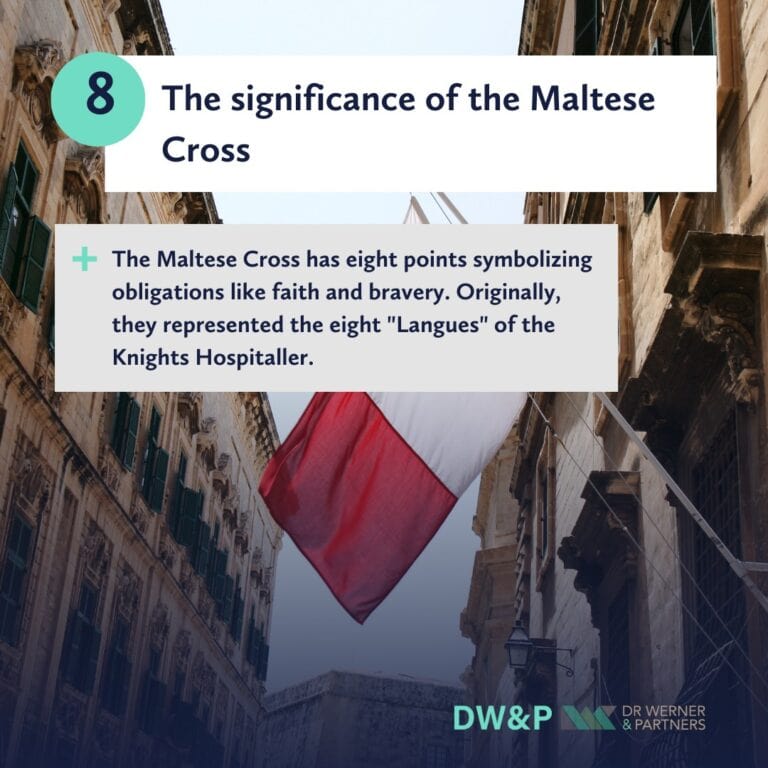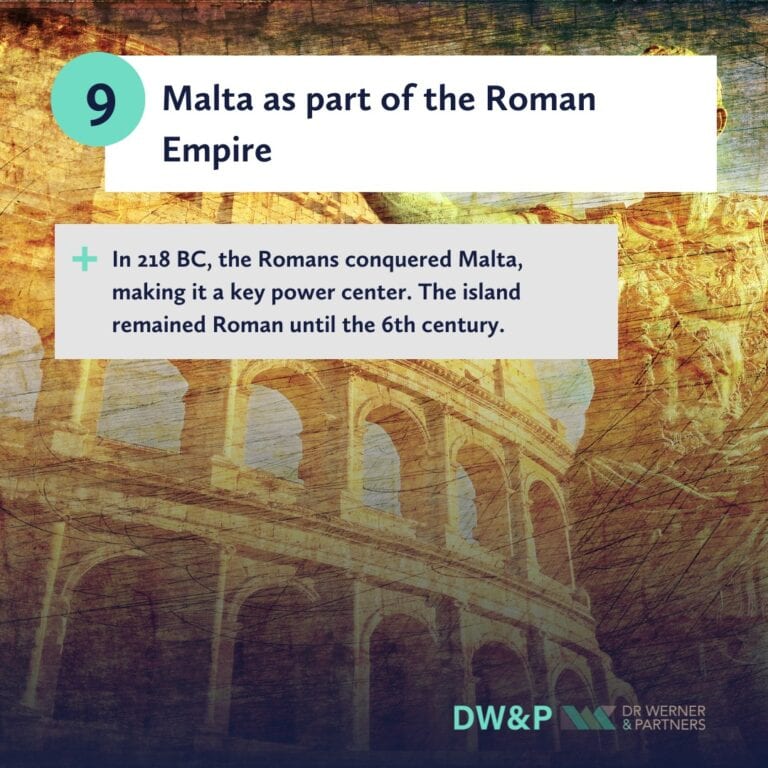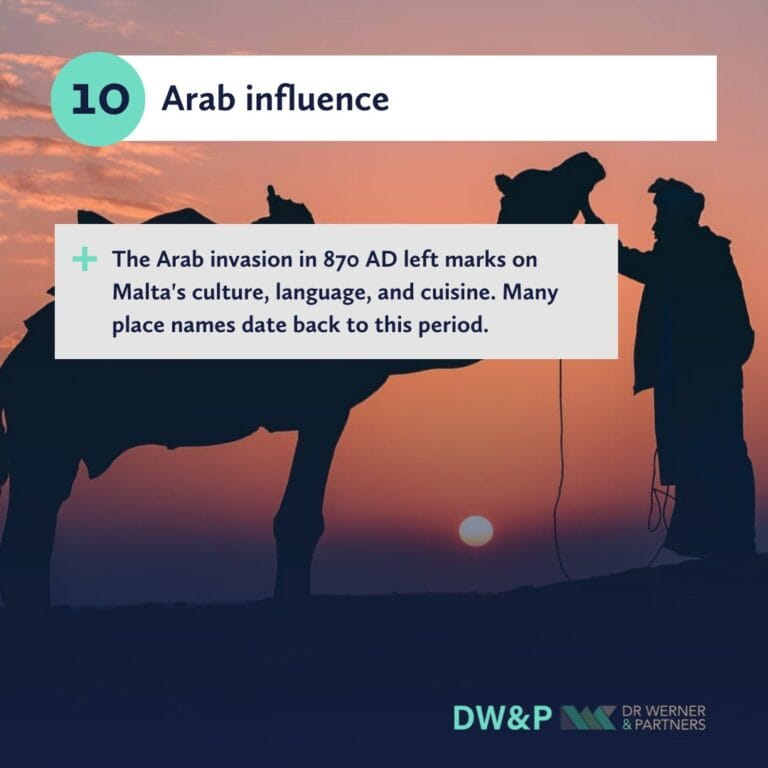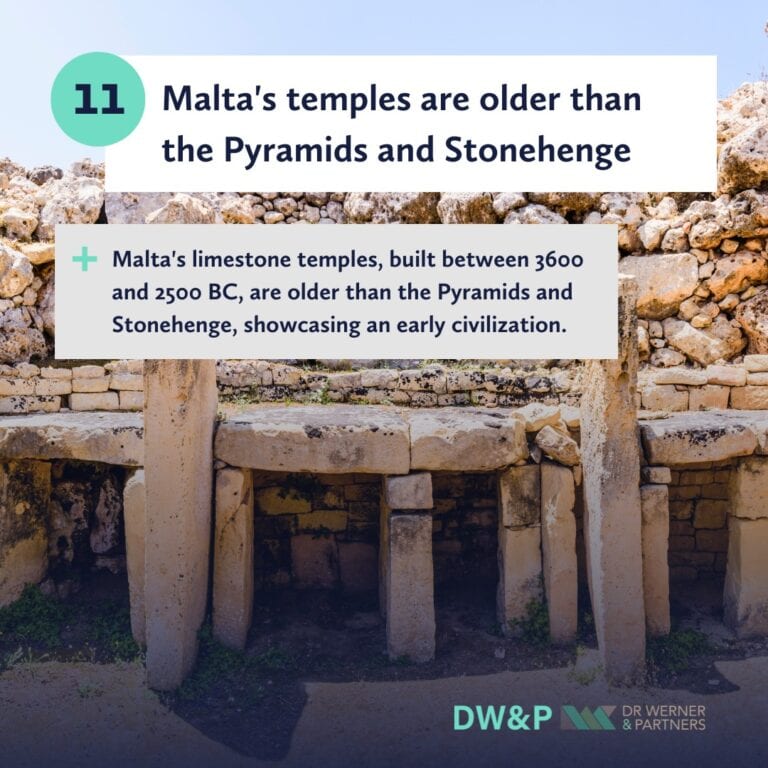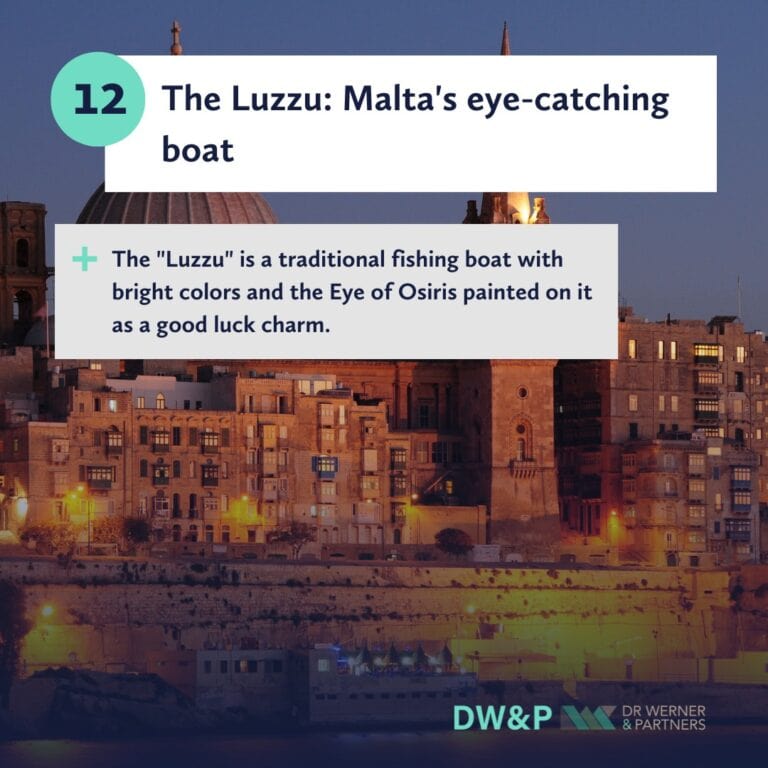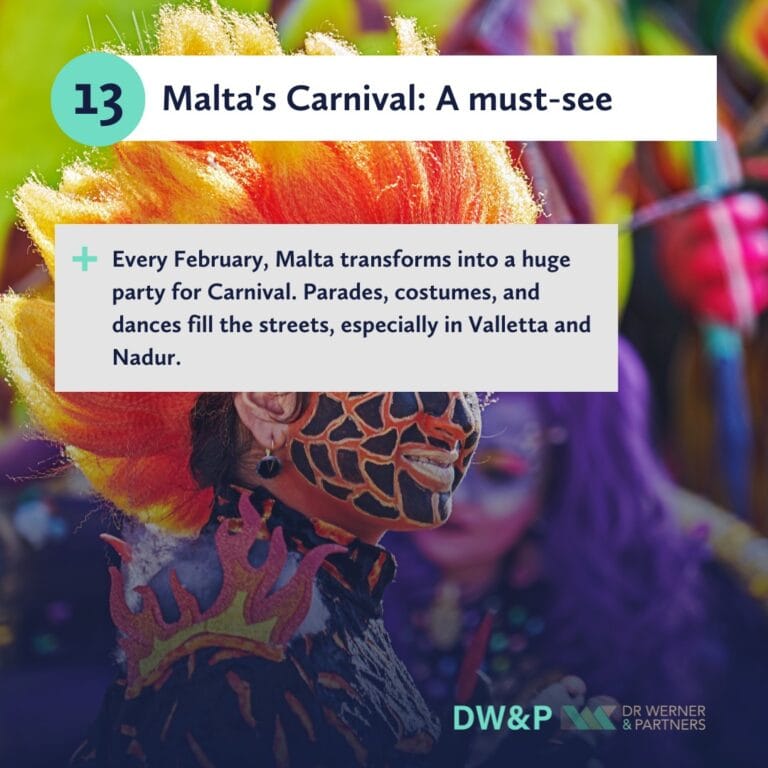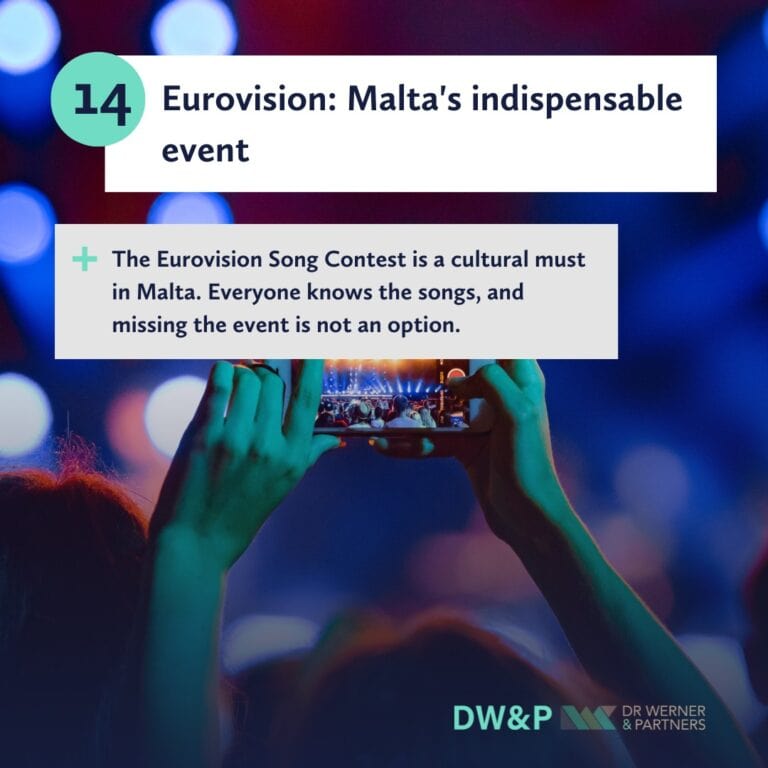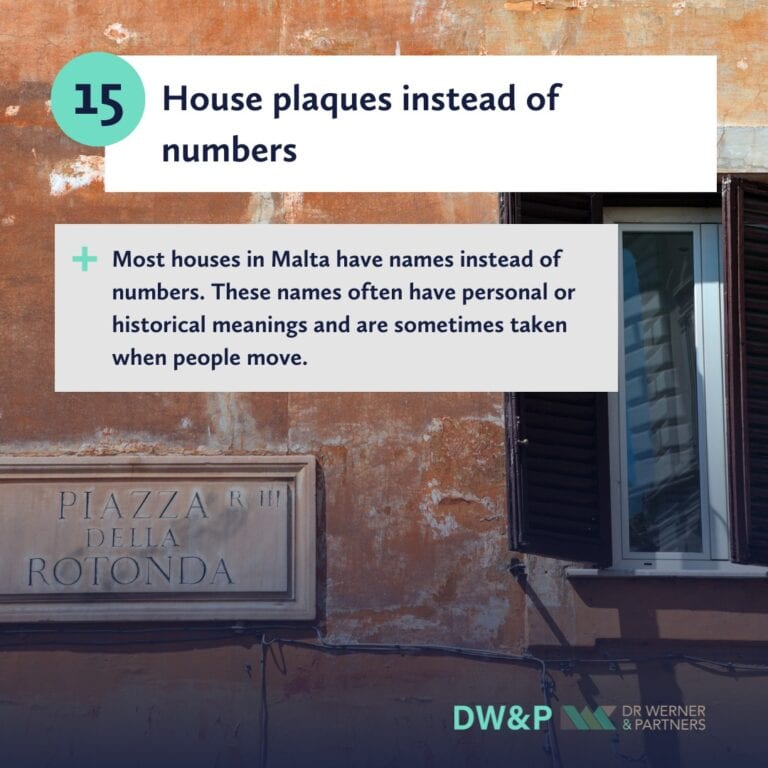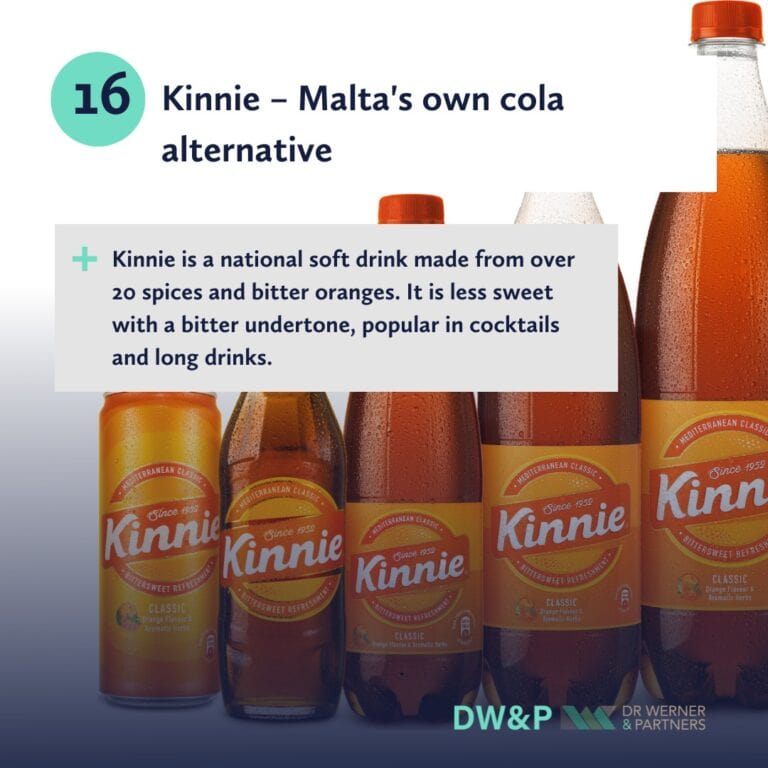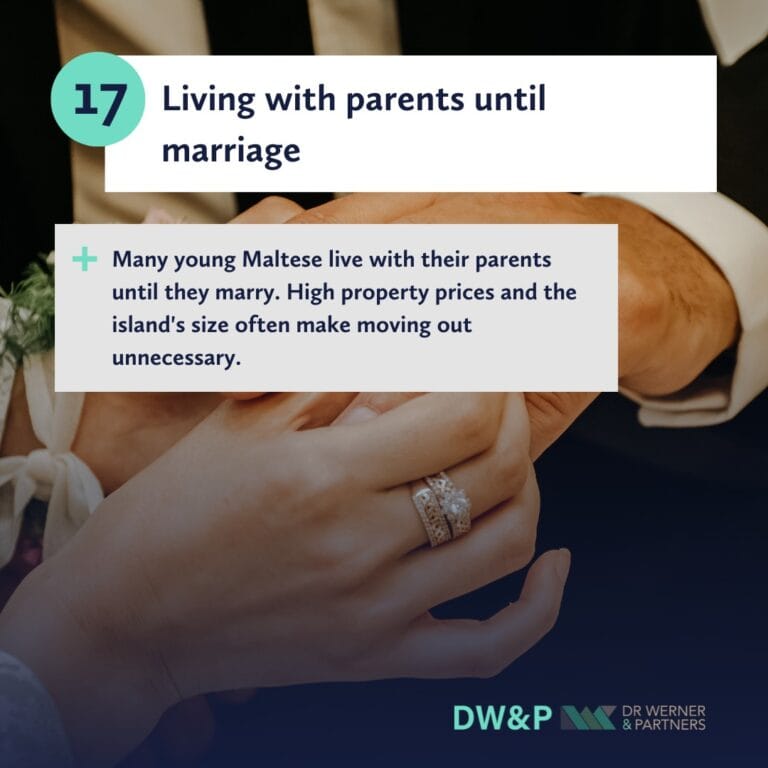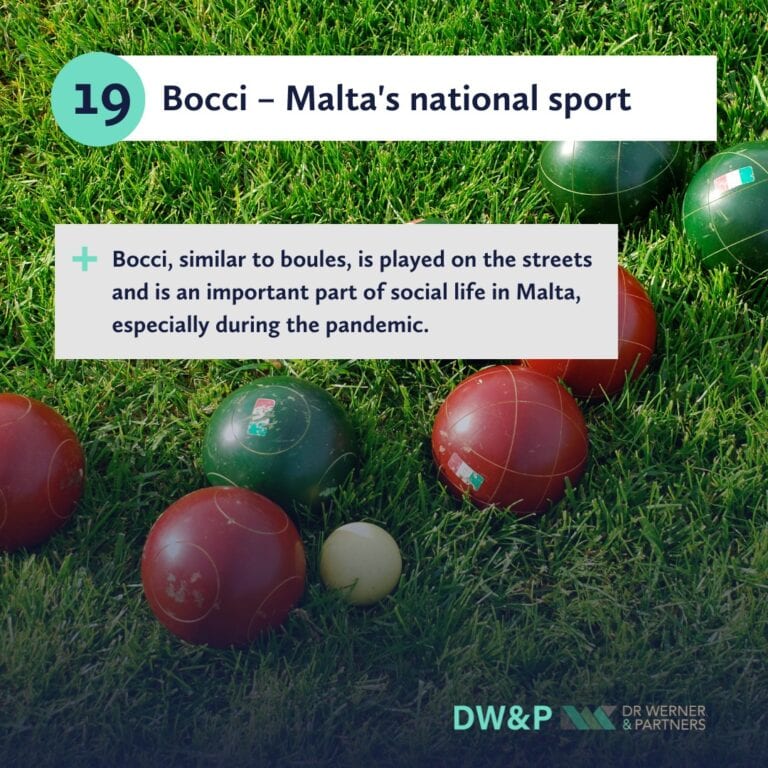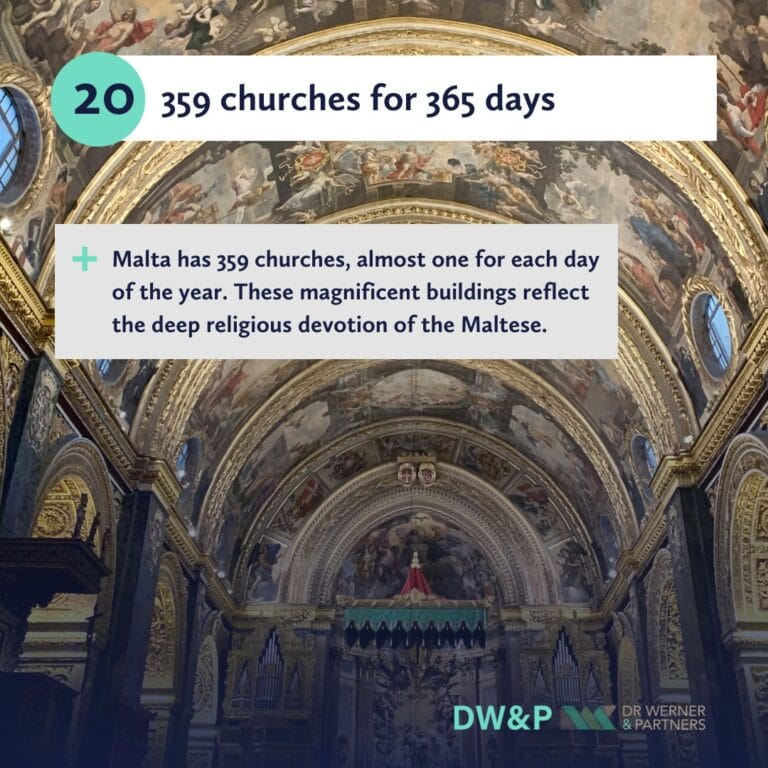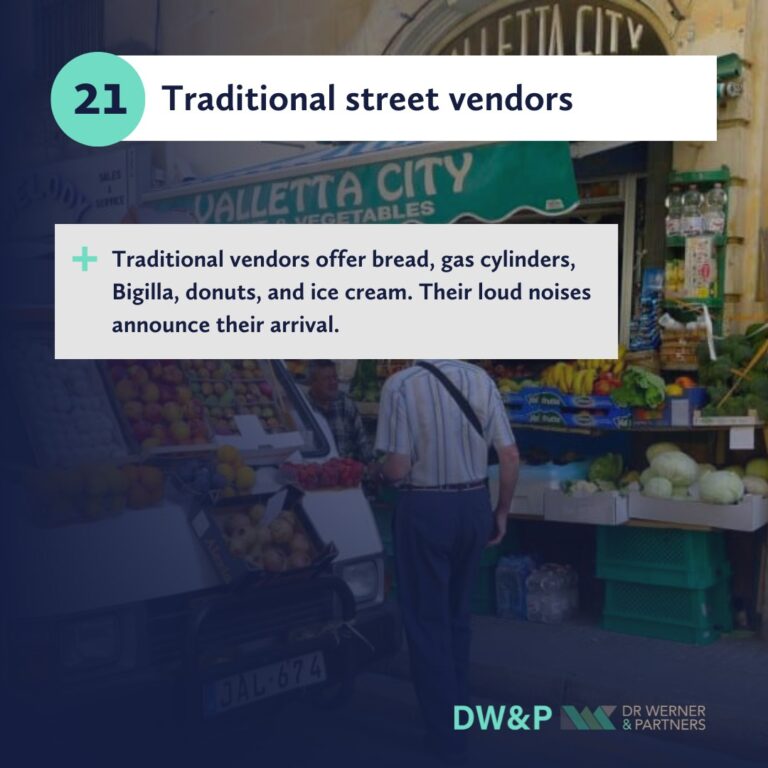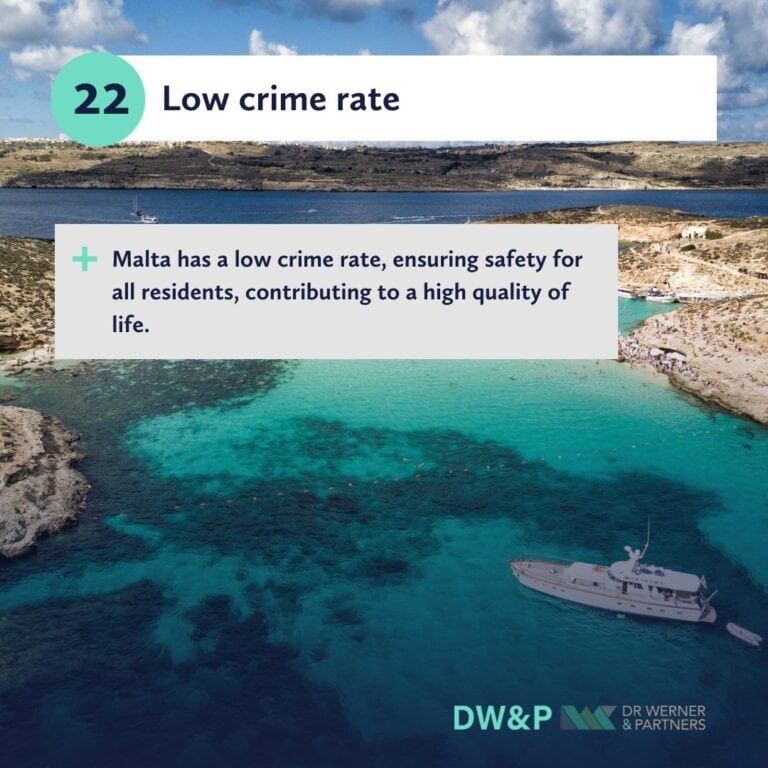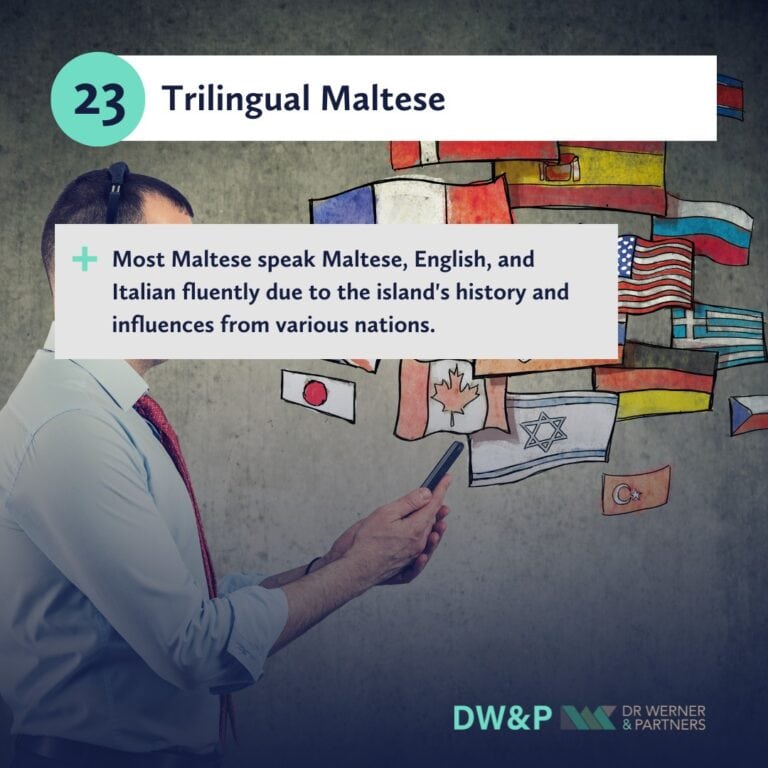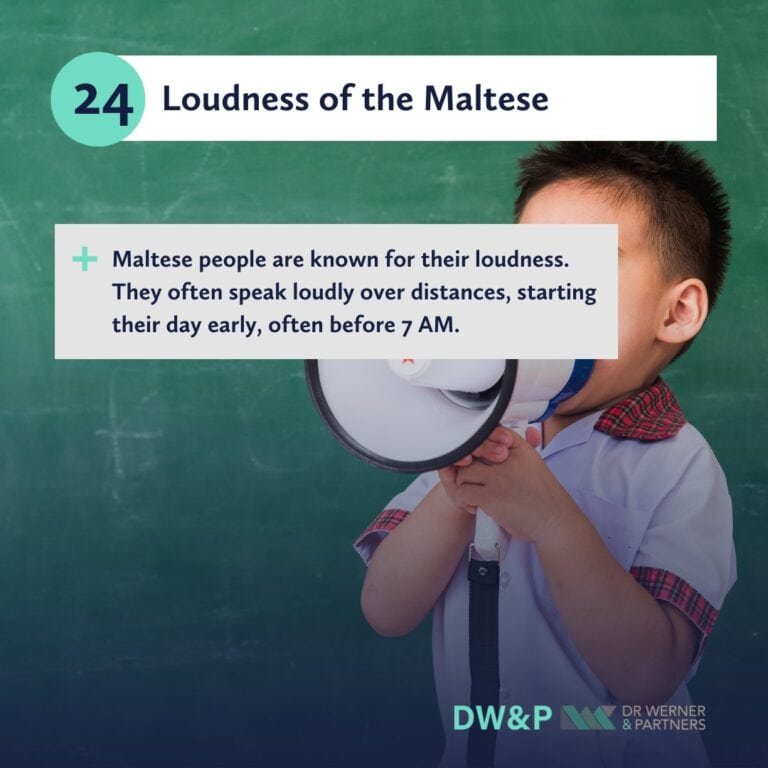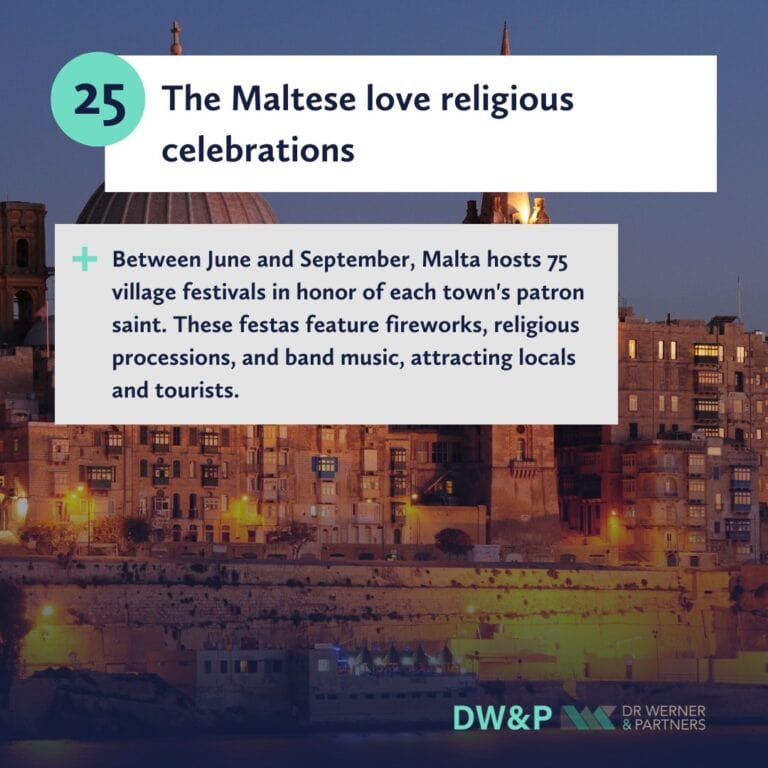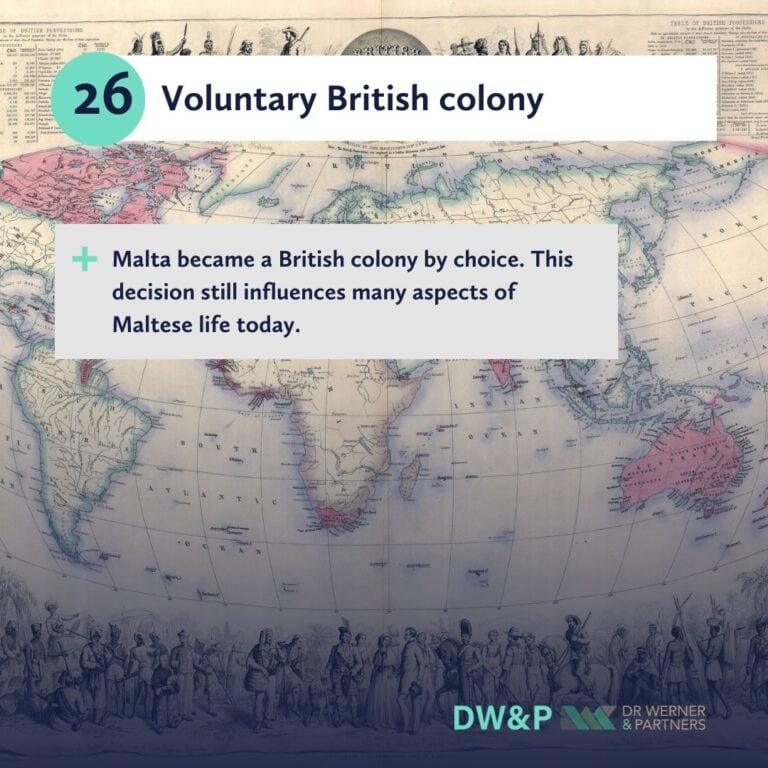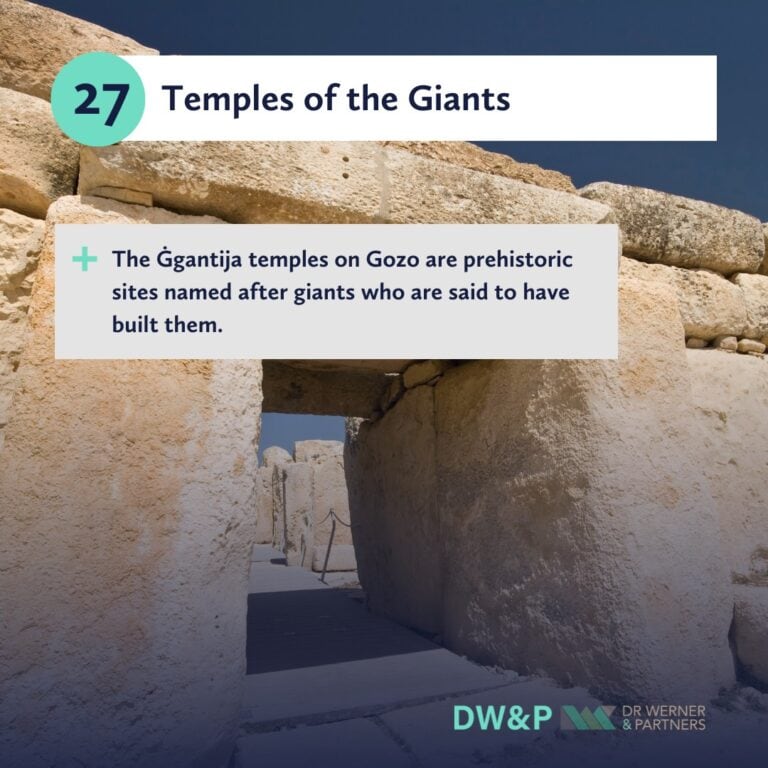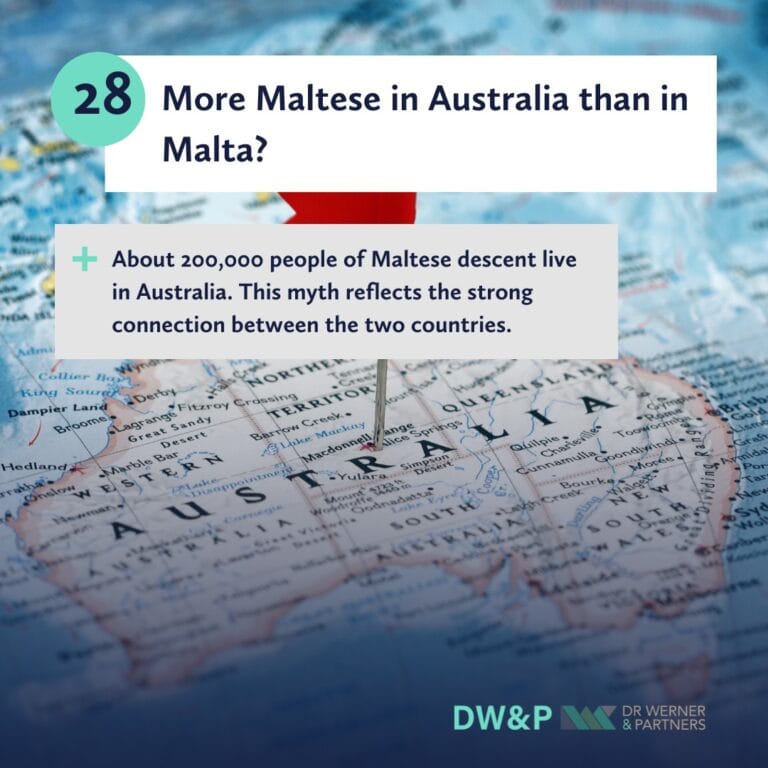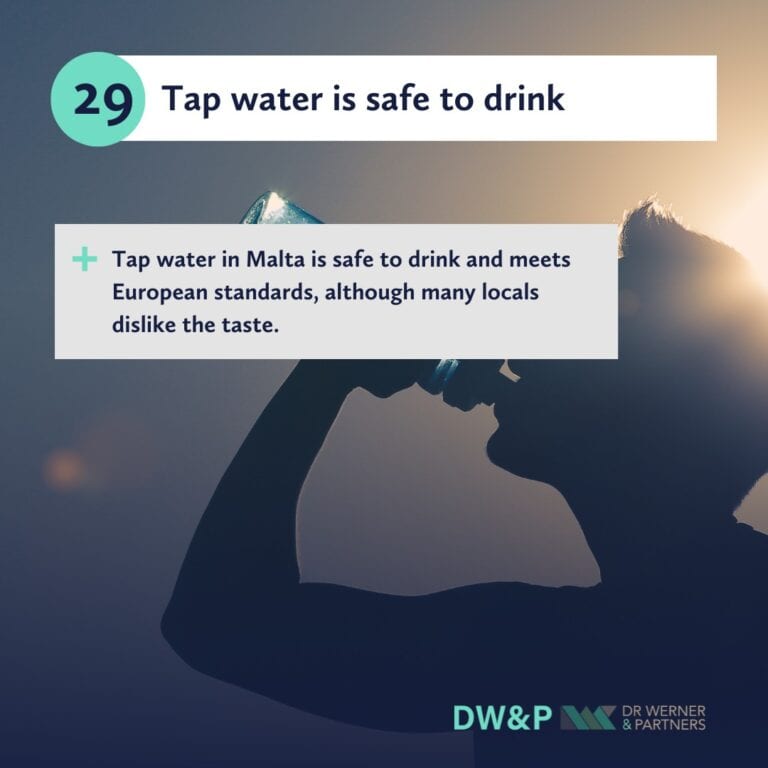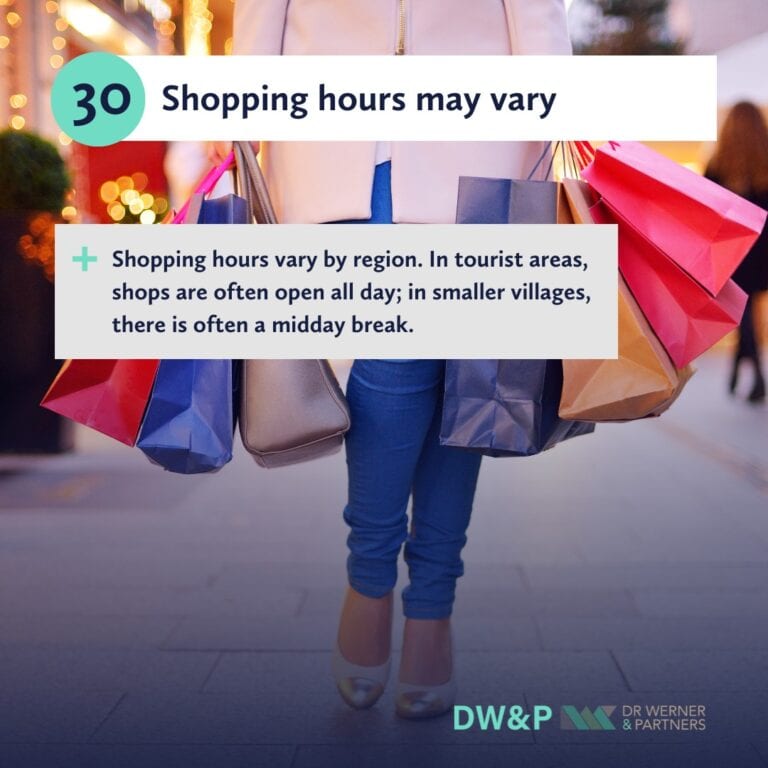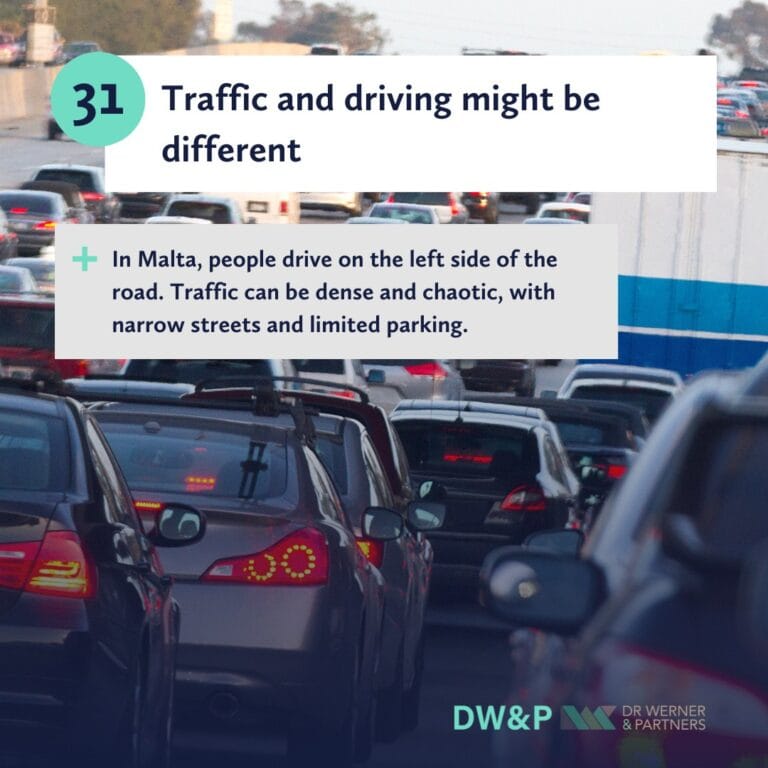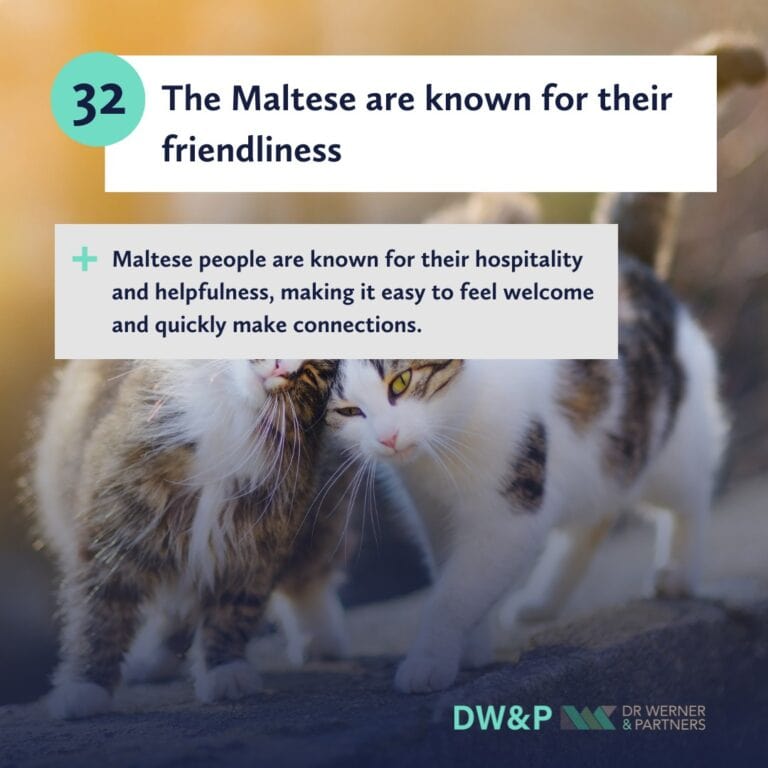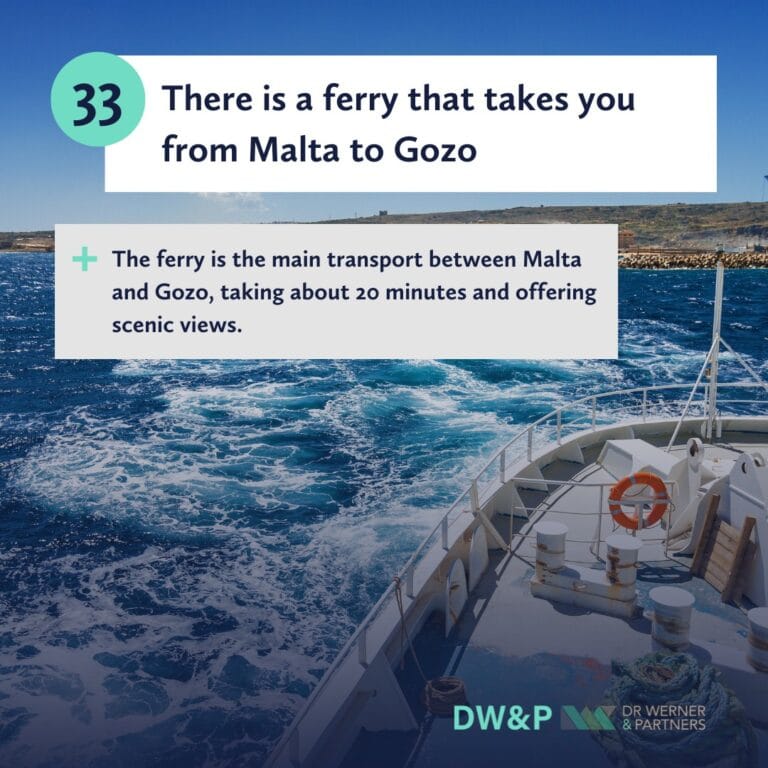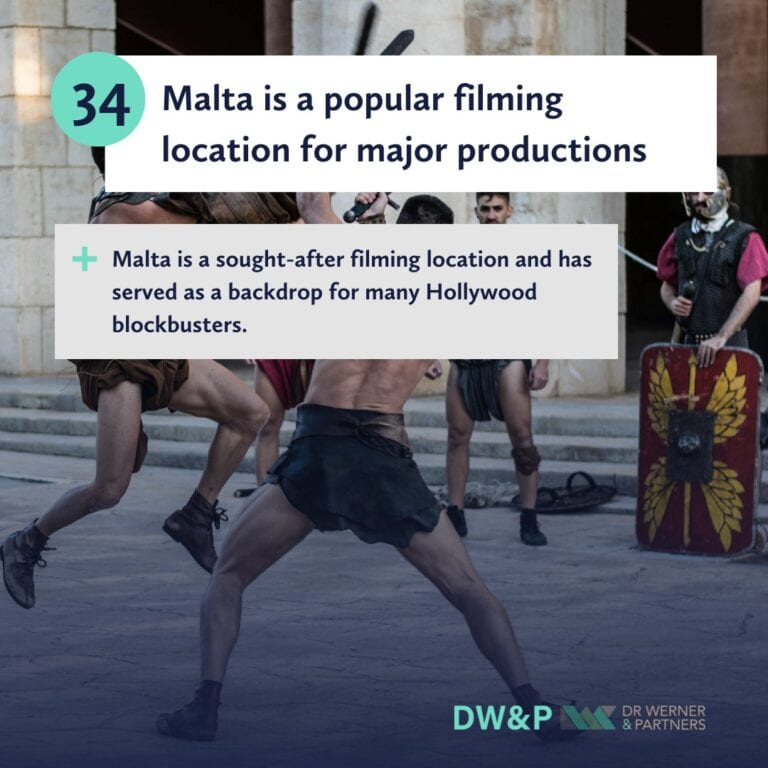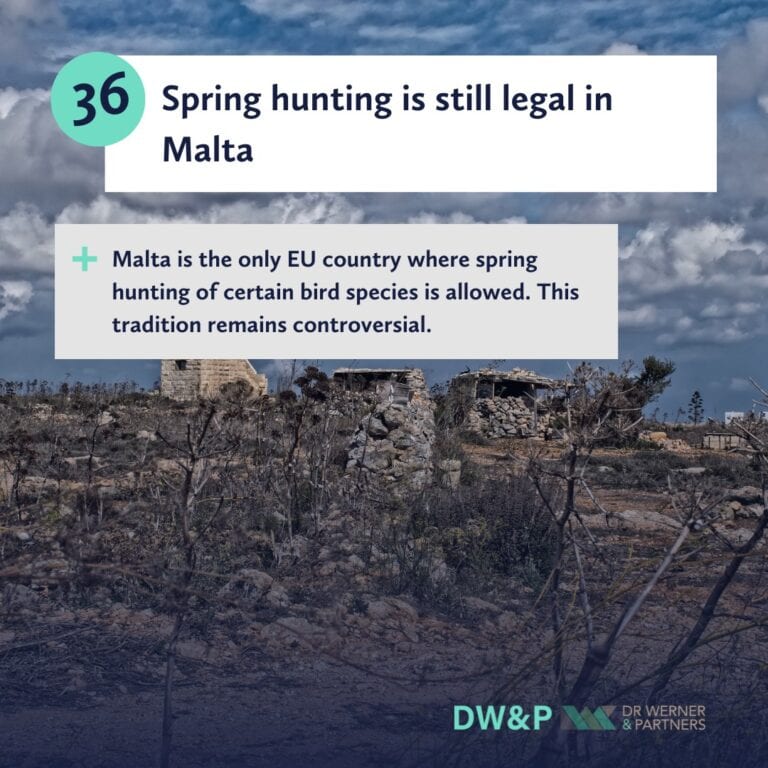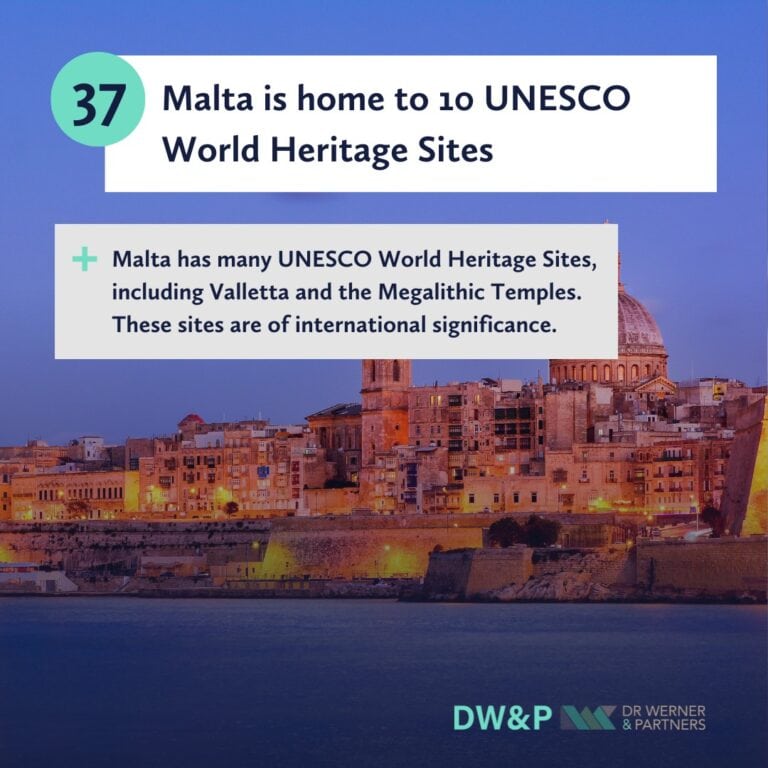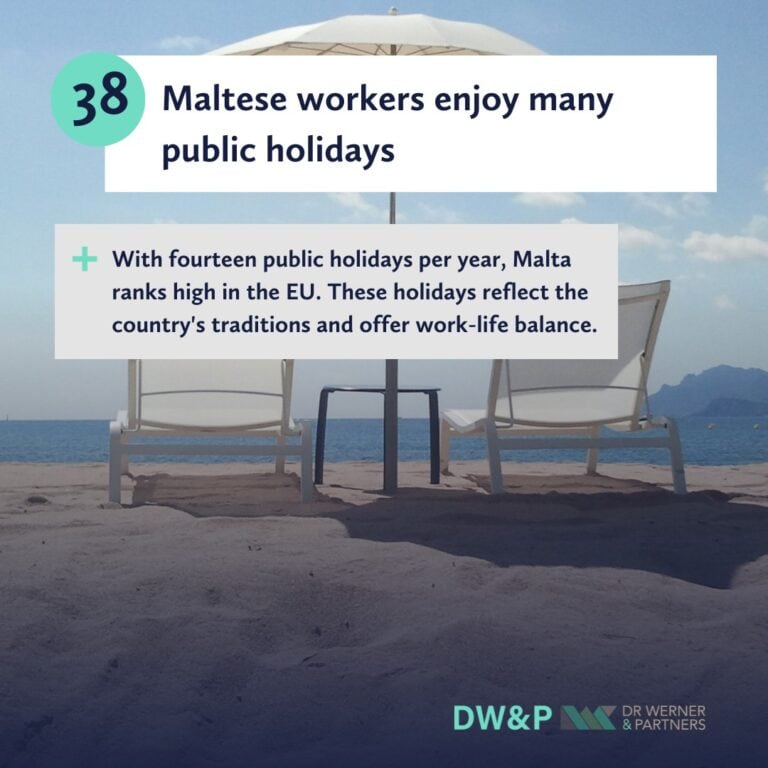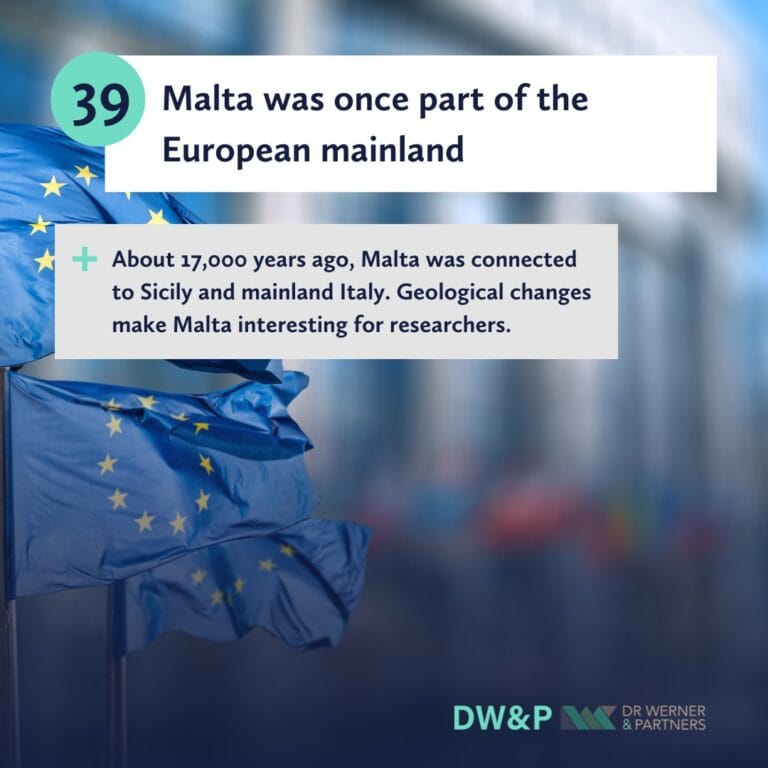Summer, sun, beach: when people think of Malta, vacation feelings immediately come to mind. But the small Mediterranean island has much more to offer than just its picturesque coastlines and 300 days of sunshine a year
. From traditions and language skills to unique social dynamics, Malta offers a wealth of interesting facts and stories that will broaden your understanding of this charming country. That’s why we’re clearing things up – 15 things you didn’t know about Malta that remain hidden to tourists.
1. All Maltese People Know Each Other
Malta is relatively small, which gives the impression that all the inhabitants know each other. While it’s not true that everyone knows everyone, the likelihood of having mutual friends or relatives is high. The close-knit community and the manageable size of the island promote this feeling of solidarity.
2. Malta: A Small Island with a Large Population
With over 520,000 inhabitants, Malta is one of the most densely populated countries in the world. Despite its small size, the island offers a high quality of life and a rich cultural diversity, which is reflected in the close-knit community and lively social activities.
3. Malta as a Haven for Expats
Malta is not only a home for the Maltese. A large community of expats from all over the world live on the island. These bring with them new flavors, ideas and traditions, making Malta a true melting pot of cultures. The international atmosphere is particularly noticeable in cities such as St. Julian’s and Sliema.
4. Football: Italy or England?
Soccer fans in Malta are mostly supporters of either the Italian or the English national team. During international tournaments such as the World Cup or the European Championships, the island is divided into two camps: England fans gather in Bugibba, while Italy supporters go to St. Julian’s to watch the games.
5. Anti-Pee Bottles: A Method Against Dog Urine
It is common to see water bottles on the walls of many houses in Malta. However, these are not refreshments for on the go, but serve a special purpose: to prevent dogs from urinating on the walls of the house. Many houses in Malta are built of sensitive limestone, which is attacked by dog urine. The theory behind the water bottles is that the reflective light of the sun scares dogs off because they think something is moving. This method is widespread and has been used for generations, although no one knows exactly who started it. Locals swear by it and it has become an integral part of the street scene.
6. Maltese: A Unique Semitic Language in the Latin Alphabet
Maltese is the only Semitic language that is written in the Latin alphabet. Unlike Arabic, which is written in Arabic script, or Hebrew, which uses Hebrew characters, Maltese is written using the same alphabet as English. An example of this is the word “tajjeb”, which means “good” and shows its Semitic roots, but in a spelling that is familiar to Western eyes.
7. Over 300,000 Cars on a Small Island
Malta has a population of over 500,000 people, but there are over 300,000 registered cars. Almost every family owns several cars, and it is common for young people to receive a car as a gift on their 18th birthday. Driving is an essential part of life on Malta, as the island is small and public transportation is limited. This leads to considerable traffic problems, especially in cities. Local public transport consists mainly of buses, which are well connected but often overcrowded and unreliable. Many Maltese therefore prefer to have their own car in order to be flexible and independent. This leads to busy streets and a lack of parking spaces. The government is working on various initiatives to relieve traffic congestion, such as promoting car-sharing services and improving public transportation.
8. Malta’s Flag: A Symbol of Courage and Honor
The Maltese flag consists of two vertical stripes in white and red, with the cross of St. George in the upper left corner. The George Cross was awarded to Malta in 1942 by King George VI of the United Kingdom in recognition of the island’s courage and dedication during the Second World War.
9. The Meaning of the Maltese Cross
The Maltese cross has eight points, symbolizing the eight obligations or aspirations of the knights. These include faith, forgiveness and bravery. These peaks originally represented the eight “Langues” (languages) of the Knights of St. John, which were essentially administrative divisions of the Order.
10. Malta as Part of the Roman Empire
In 218 BC, the Romans took over Malta and turned the island into an important center of power. Malta experienced a heyday with imposing walls, temples and magnificent mosaics. Latin became the dominant language and the island remained Roman until the 6th century.
11. Arab Influence
The Arab invasion in 870 AD left a lasting mark on Maltese culture, language, agriculture and even cuisine. Many place names on Malta date from this period and bear witness to the Arab presence on the island.
12. Malta’s Temples Are Older Than the Pyramids and Stonehenge
Malta is home to amazing limestone temples built between 3600 BC and 2500 BC. These structures are older than the pyramids of Egypt and Stonehenge in England and bear witness to the early civilization on the island.
13. The Luzzu: Malta’s Distinctive Boat
The “Luzzu” is Malta’s traditional fishing boat. The bright colors show where it comes from, for example red for St. Paul’s Bay. The eye of Osiris is also painted on – a lucky charm at sea.
14. Malta’s Carnival: A Must-See
Every February, Malta turns into one big party for Carnival. Floats, costumes and dances fill the streets, especially in Valletta. For something different, head to Nadur on Gozo, where things are unusual and fun.
15. Eurovision: Malta’s Indispensable Event
The Eurovision Song Contest is a cultural must in Malta. From children to grandparents, everyone knows the songs. Missing it is not an option. It unites the entire nation and brings people together.
16. House Plaques Instead of House Numbers
House numbers are rare in Malta. Instead, most of the houses have names that often have personal or historical meanings. After the Second World War, many Maltese established links with Australia, which is reflected in house names such as “Sydney” or “Mumbai”.
When moving house, homeowners often take their plaques with them, which can lead to confusion if several houses in the same street have the same name. Officially, all houses have numbers, but these are rarely used. On official forms and postal items, often only the house name is given together with prominent landmarks such as restaurants or public places.
17. Kinnie – Malta’s Own Cola Alternative
Malta has its own national soft drink called Kinnie. This drink, which consists of over 20 spices and bitter oranges, was originally developed to compete with cola. It is ubiquitous in Malta and available on every street corner, but in hardly any other country.
The taste of Kinnie is unique and not everyone’s cup of tea – it is less sweet and has a bitter undertone. Nevertheless, it is the pride of the Maltese and is often used in cocktails and long drinks.
18. Living with Parents Until Marriage
It is normal in Malta to live with your parents until you get married. Due to the small size of the island, moving is often not necessary, even if you are studying or working. Property prices are also high, so many young people prefer the financial relief and comfort of their parents’ home, even if this means less privacy.
19. The Website Which Beach – Your Beach Guide
Maltese use the website
https://whichbeach.com.mt/ to find the best beach for the day. This website shows the weather conditions, the number of visitors and the cleanliness of the beaches in real time. Information about jellyfish or high waves that could make a visit to the beach unpleasant is particularly helpful.
The website is an indispensable tool for anyone living or vacationing in Malta, as it helps to find the best beach for any time of day and weather conditions. This makes every visit to the beach a safe and relaxing experience.
20. Bocci – Malta’s National Sport
Bocci is a traditional Maltese game that is considered a national sport. It is similar to boules, but is played in teams and mainly takes place on the street. Bocci was also an important part of social life during the coronavirus pandemic, even though the streets were emptier than usual.
21. 359 Churches for 365 Days
Malta is a very Catholic country and this is reflected in the number of churches. There are 359 churches on the Maltese islands, which is almost one church for every day of the year. These churches are often magnificent and bear witness to the deep religious commitment of the Maltese.
22. Traditional Vending Carts
In some towns you can still find traditional vending carts selling bread, gas cylinders, bigilla (a Maltese bean paste), donuts and ice cream. These cars have special sounds that announce their arrival, and the volume is so high that no one can miss them.
23. Low Crime Rate
The crime rate in Malta is very low. Regardless of age or gender, you can feel safe on the island no matter where you are. This contributes significantly to the quality of life and well-being of the residents.
24. Trilingual Maltese
Due to the island’s varied history, which has been ruled by different nations, most Maltese are fluent in three languages: Maltese, English and Italian. Until the 1990s, there were no English-language television channels, so many Maltese learned Italian through television. English is the second official language and Maltese is the national language.
25. Loudness of the Maltese
Maltese are known for their loudness, similar to other southern European peoples. They have no inhibitions about speaking loudly over long distances instead of coming closer. If you live on the first floor, you should be prepared for daily wake-up calls, which often start no later than 7 am.
26. Maltese Love Religious Celebrations
Between June and September, Malta hosts 75 local village festivals, which are celebrated in honor of the town’s patron saint. These festivals, also known as “Festa”, are characterized by fireworks, religious processions and brass band music. The festivities attract both locals and tourists and offer a unique opportunity to experience the vibrant culture and religious devotion of the Maltese people. Local tour operators often offer tours to the most famous festivals, making these traditions accessible to visitors.
27. Voluntary British Colony
Malta was not forced to become a British colony. When the island was given the choice of who should rule it, the Maltese voluntarily chose Great Britain. This decision still shapes many aspects of Maltese life today.
28. Temples of Giants
One of Malta’s most fascinating archaeological sites are the Ġgantija temples on the sister island of Gozo. These prehistoric temples are called “Place of the Giants”, which is due to the legend that they were built by a race of giants.
29. More Maltese in Australia Than in Malta?
It is often said that there are more Maltese in Australia than in Malta itself. In fact, there are around 200,000 people of Maltese descent in Australia, while the population of Malta is around 450,000. However, this myth shows the strong connection between the two countries.
30. Tap Water Is Safe to Drink
In Malta, tap water is safe to drink in most areas. This is particularly practical for tourists who do not have to worry about the water quality. The Maltese waterworks, the Water Services Corporation, ensure that the water is regularly tested and meets European drinking water standards. Nevertheless, many locals and visitors prefer bottled water, mainly because of the taste. Tap water is often obtained from desalination plants, which gives it a slightly salty taste. Nevertheless, it is a good alternative to reduce plastic waste and protect the environment.
31. Shopping Hours Can Vary
Shopping times in Malta can vary greatly depending on the region and store. In tourist areas such as Valletta, Sliema and St. Julian’s, stores are often open all day, from 9am to 7pm, to meet the needs of visitors. In smaller villages and rural areas, stores often close for a lunch break between 1 and 4 pm. Stores such as Tinge Point and supermarkets in Sliema are open on Sundays and public holidays.
32. Traffic and Driving Might Be Different From What You’re Used To
In Malta, you drive on the left-hand side of the road, a habit that dates back to British colonial times. This can be a challenge for many tourists, especially if they are used to driving on the right-hand side. Traffic in Malta can be heavy and chaotic, especially in busy cities and during rush hour. The road network is relatively small and often narrow, which makes it difficult to navigate. In addition, the roads are sometimes poorly signposted and parking spaces are rare in urban areas.
33. The Maltese Are Known for Their Friendliness and Helpfulness
The Maltese are widely known for their hospitality and willingness to help. Whether you’re asking for directions, looking for restaurant recommendations or need help with a problem, the locals are usually willing to help you. This friendliness also extends to everyday interactions, where you are often met with a smile and a kind word. In smaller communities, it can happen that people know each other even better and react particularly warmly to strangers. This cultural openness makes it easy to feel welcome in Malta and to make friends quickly.
34. There Is a Ferry That Takes You From Malta to Gozo (and Vice Versa)
Although a fixed link between Malta and Gozo is repeatedly discussed, the ferry is currently the most important means of transportation between the two islands. The ferry departs from the northernmost point of Malta, Ċirkewwa, and reaches Mġarr on Gozo in around 20 minutes. This crossing is not only practical, but also scenic, as it takes you past the small island of Comino. The ferries run regularly, and during the summer months there are additional trips to cover the increased demand
35. Malta Is a Popular Filming Location for Major Film Productions
Malta is a sought-after location for film productions and has already served as the backdrop for many Hollywood blockbusters. Thanks to its diverse landscapes, historic buildings and clear blue waters, the island is an attractive filming location. Films such as “Gladiator”, “World War Z” and “Captain Phillips” as well as the TV series “Game of Thrones” have shot scenes here. The Malta Film Commission supports productions and offers incentives to attract international film projects to the island. For movie lovers, it’s exciting to know that they could stumble across famous film sets during their stay in Malta. You are welcome to contact us.
36. There Are Several Political Parties, but Only Two Dominate the Parliament
Malta’s political system is dominated by two major parties: the Nationalist Party (PN) and the Labor Party (PL). Although there are several smaller parties, these two parties divide all parliamentary seats between them. Political elections and referendums are often fiercely contested and are frequently decided by narrow majorities. This bipolar political landscape leads to intense election campaigns and political passion among the population.
37. Spring Hunting Is Still Legal in Malta
Malta is the only EU country in which spring hunting of certain bird species is still permitted. This hunting tradition has a strong political lobby, which pushed through special regulations during the negotiations for the country’s accession to the EU. Although hunting is only permitted to a limited extent, it remains a controversial issue. A national referendum in 2015, in which many Maltese called for an end to spring hunting, was narrowly decided in favor of the hunters. The hunting lobby continues to have considerable influence and can influence election results.
38. Malta Is Home to 10 UNESCO World Heritage Sites
Despite its small size, Malta has an impressive number of UNESCO World Heritage Sites. These include the capital Valletta, the Megalithic Temples of Malta and the Hypogeum of Ħal-Saflieni. Seven other sites are on the tentative list, including the Grand Harbour, the Victoria Lines and the catacomb complexes. These sites are of international importance and are preserved for the protection and conservation of future generations. Visitors should definitely visit these historic sites to experience Malta’s rich history and culture.
39. Maltese Workers Enjoy Many Public Holidays
With fourteen public holidays per year, Malta is one of the countries with the most public holidays in the EU. These days off are used by locals to spend time with family and friends, attend religious festivals or simply relax. The holidays reflect the deeply rooted traditions and the Catholic character of the country. For employees, this means additional relaxation and a good work-life balance.
40. Malta Was Once Part of the European Mainland
Around 17,000 years ago, the Maltese islands were the mountain peaks of a large mass of land that connected Malta with Sicily and mainland Italy. This land mass eventually sank below sea level, separating Malta from Europe. These geological changes have contributed to the unique flora and fauna of the islands and also make Malta an interesting destination for naturalists and geologists.
41. It’s No Surprise That the Majority of Maltese Are Catholic
According to the Bible, the apostle Paul was shipwrecked off the coast of Malta in 60 AD and converted the inhabitants to Christianity. Since then, Catholicism has been deeply rooted in Maltese culture and society. Most Maltese are practicing Catholics, and the church plays a central role in their daily lives. This is reflected in the numerous churches, religious festivals and processions that take place throughout the year.
Conclusion
The close-knit community and diverse cultural influences make Malta a fascinating destination and an interesting place to live. Whether you are interested in history, the strategic importance of Malta during the Second World War or everyday customs and traditions, there is always something new to discover in Malta.
